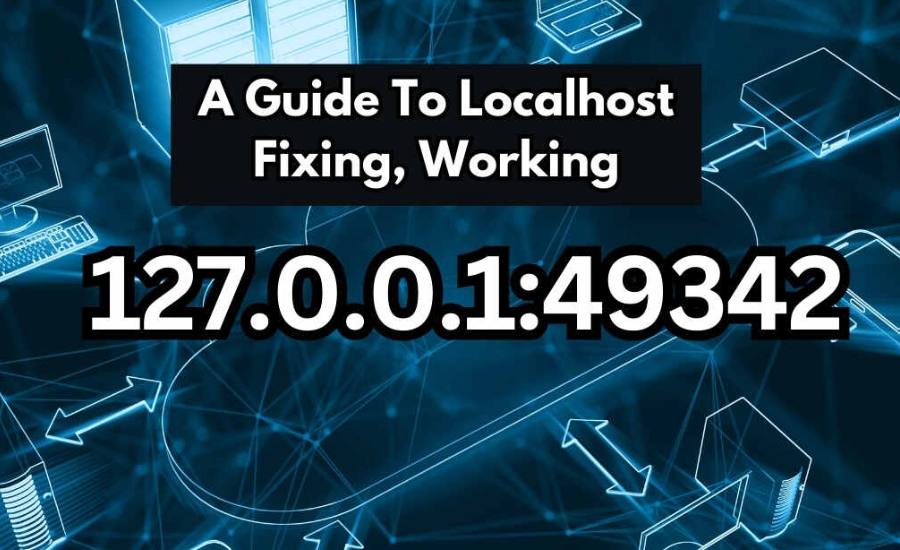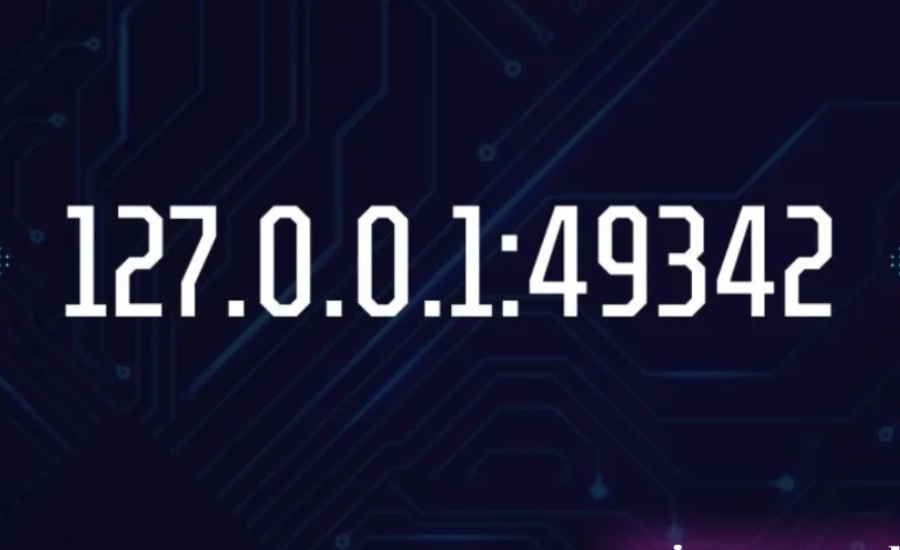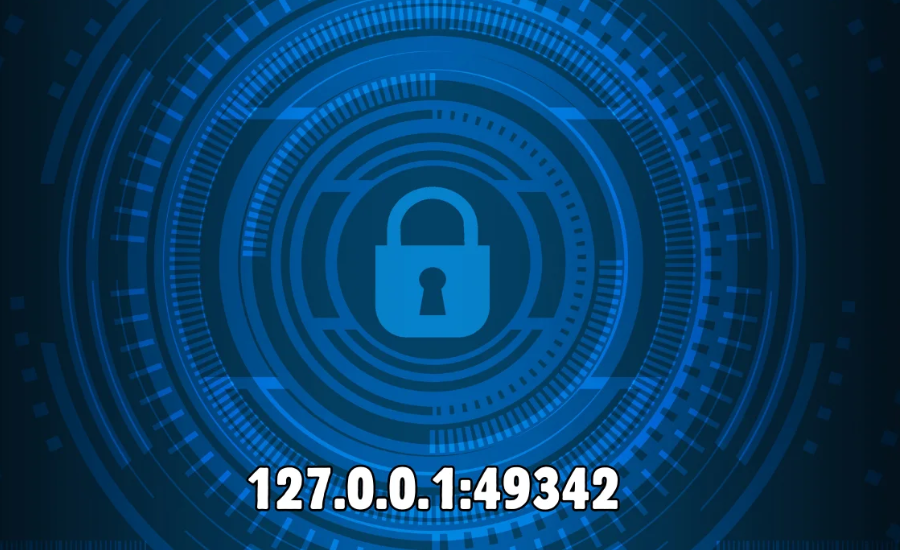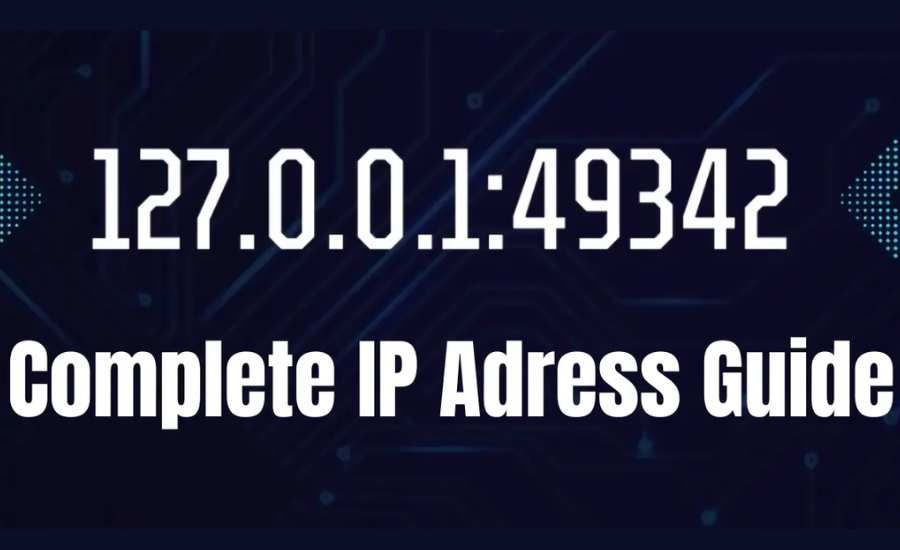In the world of computing, many specialized terms and concepts hold significant value, though they may not be familiar to all users. One such term that frequently appears on computer screens, especially when working with certain applications, is 127.0.0.1:49342. For many users, this can seem confusing or troublesome. To effectively address this issue, it’s essential to have a fundamental understanding of IP addresses, also known as Internet Protocol addresses. Gaining insight into how IP addresses function will enable us to resolve this error more efficiently. In the following sections of this article, we will explore what an IP address is and why it plays a crucial role. Continue reading to learn more about the implications of 127.0.0.1:49342 and how to manage it.
Understanding IP Addresses: An Overview

An IP address is a distinctive numerical identifier assigned to each device connected to a network. This unique address facilitates the seamless identification of devices, allowing them to communicate efficiently. With the help of these unique Internet Protocol addresses, devices within a network can exchange information, ensuring that data travels to its intended recipient without any errors or misdirection.
IP addresses are crucial for the smooth operation of network communications, as they provide a way for devices to locate and interact with each other across the internet or a local network. This systematic addressing helps prevent data from becoming lost and ensures it arrives at the correct destination.
There are two primary types of IP addresses, each serving its specific role within network communications. Below, we will delve into these two types and explore their functions in detail.
Types of IP Addresses: An In-Depth Look
IP addresses come in various formats, each with its own structure and purpose. The two primary types are IPv4 and IPv6, and they differ significantly in their composition and functionality.
IPv4 Addresses: IPv4 addresses use a 32-bit structure and are represented as four decimal numbers separated by periods. For example, an IPv4 address might appear as 192.168.1.1. This format is widely used and familiar to many users.
IPv6 Addresses: IPv6 addresses, on the other hand, utilize a 128-bit structure and are expressed in hexadecimal format. An IPv6 address is divided into eight groups, each containing four hexadecimal digits, separated by colons. For example, an IPv6 address might look like 2001:0db8:85a3:0000:0000:8a2e:0370:7334. This format supports a vastly larger number of unique addresses, accommodating the growing number of devices connected to the internet.
Components of an IP Address: An IP address is divided into two main segments:
- Network Portion: This part identifies the specific network to which the device belongs. It helps in routing the data to the correct network.
- Host Portion: This segment distinguishes individual devices within the network. It ensures that data is directed to the correct device within the specified network.
Static vs. Dynamic IP Addresses:

As you explore IP addresses, you might encounter two common types: static and dynamic.
- Static IP Address: This address remains constant over time and is manually assigned to a device. It is ideal for devices that need a consistent and unchanging address, such as servers or networked printers.
- Dynamic IP Address: Unlike static IP addresses, dynamic IP addresses are assigned by a network’s DHCP server and can change periodically. This type of address is commonly used for general devices like computers and smartphones, which do not require a permanent address.
Understanding these types and components of IP addresses can help you better navigate network configurations and troubleshoot connectivity issues.
Decoding 127.0.0.1:49342
The sequence 127.0.0.1:49342 represents a specific aspect of network communication and application testing in computing. Here’s a detailed breakdown of what each part means:
Understanding 127.0.0.1:
- 127.0.0.1 is a special IP address often referred to as “localhost” or “loopback address.” This address is universally recognized as the standard IP used by a computer to communicate with itself. It is a crucial tool for developers, as it allows for the testing and debugging of applications without requiring an external network connection. Essentially, localhost facilitates internal communication within the device, enabling the system to simulate network operations and identify issues within applications.
The Role of Port 49342:
- When 127.0.0.1 is combined with a port number, such as 49342, it forms 127.0.0.1:49342. This notation specifies a unique endpoint on the local machine where a particular application or service is listening for connections. The port number, in this case, 49342, is assigned at random and serves as an identifier for the application or service that is operating on that port. This system of ports allows multiple applications to run concurrently on the same device without interfering with each other.
How It Works:
- The combination of the IP address and port number creates a precise communication channel between the application and the localhost. This setup enables developers to interact with specific services or applications on their local machine, making it possible to test functionalities and resolve bugs efficiently.
- The port number also plays a vital role in data transmission. This helps maintain organized and accurate data flow, essential for smooth application performance.
Overall, understanding how 127.0.0.1 and port numbers like 49342 work together is fundamental for troubleshooting and developing applications. This knowledge allows for effective local testing and debugging, crucial for software development and maintenance.
Public vs. Private IP Addresses: Key Differences

Public IP Addresses:
- Definition: Public IP addresses are unique identifiers assigned to devices that are accessible over the internet. These addresses are routable and can be reached by any device on the global network.
- Accessibility: Because they are exposed to the wider internet, public IP addresses are used for communication between devices across different networks, such as accessing websites or online services.
- Usage: Public IP addresses are assigned by Internet Service Providers (ISPs) and are crucial for activities that require external communication, such as hosting a website or providing email services.
Private IP Addresses:
- Definition: Private IP addresses are used within a local network and are not directly accessible from the internet. These addresses are reserved for internal use within private networks, such as home or corporate networks.
- Accessibility: Private IP addresses are used to facilitate communication between devices within the same local network. They are not visible or reachable from external networks, which helps enhance security and manageability.
- Usage: Devices with private IP addresses communicate with each other through routers or network gateways that use Network Address Translation (NAT) to manage the connection between the private network and the internet. Commonly used private IP address ranges include 10.0.0.0 to 10.255.255.255, 172.16.0.0 to 172.31.255.255, and 192.168.0.0 to 192.168.255.255.
The Importance of Port 49342
Port 49342 plays a crucial role in facilitating communication between various services and applications on the same computer. Here’s a closer look at its significance:
Role in Local Server Configuration:
When you host a website on your local or personal computer, the server typically listens for HTTP requests on port 80. However, if you are running multiple web servers or other applications simultaneously, conflicts can arise if these applications attempt to use the same port number. This is where port 49342 comes into play.
Managing Application Conflicts:
Port 49342 is used to address conflicts that occur when multiple applications need to communicate concurrently. By designating specific ports like 49342, you can avoid interference and ensure smooth operation between different services. This is especially important in complex environments where multiple web servers or services are running, as it helps maintain clear and organized communication pathways.
Utility in Virtual Machines and APIs:
Port 49342 is also instrumental in configuring virtual machines and APIs (Application Programming Interfaces). In virtualized environments, different virtual machines require distinct port numbers to manage networking and communication effectively. Similarly, APIs rely on specific ports to facilitate interactions between numerous applications and services. By assigning unique port numbers, such as 49342, you ensure that each virtual machine and API can function properly without overlapping or communication issues.
Managing Localhost Operations: A Step-by-Step Guide

1. Install Server Software:
To start working with localhost, you first need to install server software on your computer. Popular choices include Nginx, Apache, and IIS. These servers enable your computer to host and manage applications locally.
2. Configure Server and Port:
After successfully installing the server software, you need to configure it to use port 49342. This setup allows your server to handle incoming connections on this specific port, facilitating communication between your local services and applications.
3. Update Configuration Files:
To fine-tune your server settings, you should modify the service’s configuration files. This step is crucial for defining how the server interacts with applications and services, ensuring that everything operates seamlessly.
4. Set Up Directory Paths:
Organize your server by creating and managing the appropriate directories for your web content and applications. Establish clear folder structures to store your files, which helps in maintaining an orderly system and facilitates easier access and management.
5. Test Your Setup:
Once the server is configured and directories are set, visit your website by navigating to 127.0.0.1:49342 in your web browser. This address allows you to access the local server and verify that your website or application is running as expected. If everything is correctly set up, you should see your content displayed without issues.
6. Utilize Virtualization Tools:
For more advanced setups, consider using virtualization software such as Docker or VirtualBox. These tools allow you to create and manage virtual environments, which can be particularly useful for testing and running multiple virtual machines on a single host.
Security Considerations for 127.0.0.1:49342
1. Protecting Your Services:
It is crucial to implement robust security measures to safeguard your services from unauthorized access. Port 49342, like any other network port, could potentially be exploited by malicious actors if not properly secured. Therefore, ensuring that your services are protected against unauthorized attempts is essential.
- Configure Firewalls: Set up firewalls to create a barrier between your internal network and potential external threats. Firewalls can help filter out unauthorized traffic and prevent harmful access attempts.
2. Use a VPN for Enhanced Security:
When working with virtual machines or remote servers, using a Virtual Private Network (VPN) is highly recommended. A VPN encrypts the data transmitted between your local machine and the remote server, adding an extra layer of security and privacy. This helps protect sensitive information from being intercepted during transmission.
3. Keep Software Updated:
Regularly updating your operating system and server software is a key component of maintaining security. Ensure that you apply the latest security patches and updates to address any vulnerabilities. For example, Microsoft and other software providers frequently release updates that resolve known security issues. Keeping your system current helps protect against emerging threats and enhances the overall security of your localhost environment.
4. Monitor and Review Security Settings:
Regularly review and monitor your security settings to ensure they remain effective. Conduct periodic security audits and adjust configurations as needed to respond to new threats and vulnerabilities.
By following these practices, you can significantly reduce the risk of security breaches associated with port 49342 and ensure that your localhost environment remains secure.
Common Troubleshooting Issues for Port 49342 and Localhost

When dealing with port 49342 and localhost, various issues may arise. Here are some key troubleshooting steps to address common problems:
1. Verify TCP/IP Settings:
Ensure that your computer’s TCP/IP settings are correctly configured. Proper synchronization of these settings is crucial for enabling successful communication through port 49342. Incorrect configurations can prevent the port from functioning as intended, leading to connectivity issues.
2. Check Server Configuration:
To ensure proper synchronization, review the server configuration files. Verify that port 49342 is correctly specified and available for use. Incorrect or missing port definitions in server files can disrupt the communication between your local services and applications.
3. Test Port Connectivity:
Utilize diagnostic tools such as Telnet or Curl to test the connection on port 49342. These tools help you verify whether the port is accessible and functioning correctly. By performing these tests, you can identify and troubleshoot potential client-side issues that may be affecting the port’s operation.
4. Monitor Network Traffic:
If issues persist, consider monitoring network traffic to detect any anomalies or interference that may be impacting port 49342. Network monitoring tools can provide insights into traffic patterns and help pinpoint any disruptions in communication.
5. Review Firewall Settings:
Ensure that your firewall settings are not blocking port 49342. Firewalls can sometimes prevent access to specific ports if they are not properly configured. Check your firewall rules to make sure port 49342 is open and accessible.
By following these troubleshooting steps, you can effectively diagnose and resolve issues related to port 49342 and localhost, ensuring smooth operation and connectivity for your applications and services.
Stay engaged for the latest news and alerts! 314159u
Summary
This comprehensive guide offers detailed insights into managing and troubleshooting localhost operations involving port 49342, a critical component in local network communication. It begins with an overview of IP addresses, explaining their role as unique numerical identifiers that facilitate device communication within a network. The guide distinguishes between IPv4 and IPv6, highlighting their structural differences and functions. It then decodes the significance of 127.0.0.1, the localhost address, and port 49342, which serves as an endpoint for local application communication.
The guide also differentiates between public and private IP addresses, emphasizing their respective roles in internet and local network communication. It provides a step-by-step approach to managing localhost operations, including installing server software, configuring ports, and testing setups. Additionally, the guide offers practical troubleshooting tips for resolving common issues related to port 49342 and localhost, ensuring smooth and secure operation of local services and applications.
FAQs
1. What is an IP address?
An IP address is a unique numerical identifier assigned to each device on a network, enabling devices to communicate and exchange data efficiently.
2. What does 127.0.0.1 represent?
127.0.0.1 is known as the localhost or loopback address, allowing a computer to interact with itself for testing and debugging purposes without needing an external network connection.
3. What is the purpose of port 49342?
Port 49342 serves as a specific endpoint on the local machine for applications and services. It helps manage communication between different services and applications running on the same computer.
4. What is the difference between public and private IP addresses?
- Public IP Addresses: Accessible over the internet and used for external communications.
- Private IP Addresses: Used within local networks and not directly reachable from the internet, providing internal network security.
5. How do I ensure the security of port 49342?
To secure port 49342, use firewalls to block unauthorized access, employ a VPN to encrypt data transmissions, keep your software updated with the latest security patches, and regularly review security settings.
6. What steps should I follow to troubleshoot issues with port 49342?
Check TCP/IP settings, review server configuration files, test port connectivity with tools like Telnet or Curl, monitor network traffic for anomalies, and ensure firewall settings are not blocking port 49342.
7. How can virtualization tools help with localhost management?
Virtualization tools like Docker or VirtualBox allow you to create and manage virtual environments, which is useful for testing and running multiple virtual machines on a single host, enhancing flexibility and efficiency in local development.
Don’t Miss Out—Read Now: Essential Discover





